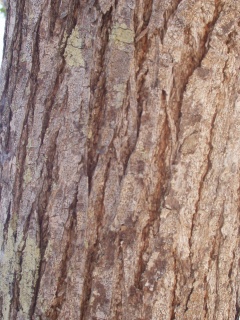Difference between revisions of "Mangrove Bark"
| Line 1: | Line 1: | ||
{{Infobox_Forest | {{Infobox_Forest | ||
| − | | image = | + | | image = Mangrovebark.jpg |
| origin = This table shows only a selection of the most important countries of origin and should not be thought of as exhaustive. | | origin = This table shows only a selection of the most important countries of origin and should not be thought of as exhaustive. | ||
| stowage factor = - m³/t | | stowage factor = - m³/t | ||
| Line 9: | Line 9: | ||
==Description== | ==Description== | ||
The bark of the mangrove tree usually shipped in bales and bags and used extensively in the tanning industry.<br><br> | The bark of the mangrove tree usually shipped in bales and bags and used extensively in the tanning industry.<br><br> | ||
| − | Water damage affects the bark as the tannin content is decreased. Mangrove is grown in salt-water swamps and would give a salt reaction to an analytical test. Bags may be stained due to natural sweat or the moisture content of the bark at the time of packing. <br><br>If the bags are contaminated by complete or partial immersion they become stained dark red up to the bag ears, a phenomenon which could not be produced had the staining been due to the natural moisture content of the bark. <br><br> | + | Water damage affects the bark as the tannin content is decreased. Mangrove is grown in [[salt]]-water swamps and would give a salt reaction to an analytical test. Bags may be stained due to natural sweat or the moisture content of the bark at the time of packing. <br><br>If the bags are contaminated by complete or partial immersion they become stained dark red up to the bag ears, a phenomenon which could not be produced had the staining been due to the natural moisture content of the bark. <br><br> |
<b>Full information on this product is in the process of completion.</b> | <b>Full information on this product is in the process of completion.</b> | ||
[[Category:Forest products]] | [[Category:Forest products]] | ||
[[Category:Products]] | [[Category:Products]] | ||
Revision as of 09:26, 7 May 2012
| Infobox on Mangrove Bark | |
|---|---|
| Example of Mangrove Bark |  |
| Facts | |
| Origin | This table shows only a selection of the most important countries of origin and should not be thought of as exhaustive. |
| Stowage factor (in m3/t) | - m³/t |
| Humidity / moisture |
|
| Ventilation | - |
| Risk factors | - |
Mangrove Bark
Contents
Description
The bark of the mangrove tree usually shipped in bales and bags and used extensively in the tanning industry.
Water damage affects the bark as the tannin content is decreased. Mangrove is grown in salt-water swamps and would give a salt reaction to an analytical test. Bags may be stained due to natural sweat or the moisture content of the bark at the time of packing.
If the bags are contaminated by complete or partial immersion they become stained dark red up to the bag ears, a phenomenon which could not be produced had the staining been due to the natural moisture content of the bark.
Full information on this product is in the process of completion.











